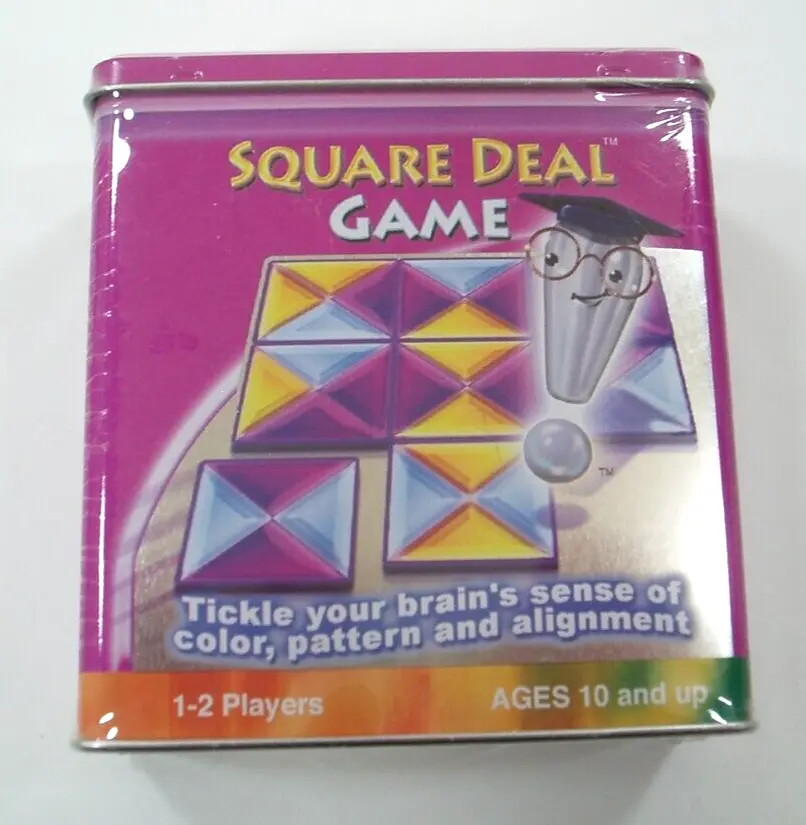Square Deal (2007)
Square Deal
“Square Deal” is a tile game where players are trying to empty their hand of tiles by playing them before their opponent. The game was published by Winning Moves. The term “Square Deal” has its origins in the Progressive Era, when it was used to describe President Theodore Roosevelt’s domestic program, which aimed to address issues such as poverty, poor living conditions, political corruption, and environmental abuse. The concept of a “Square Deal” was later incorporated into the platform of the Progressive (Bull Moose) Party when Roosevelt was its candidate in the 1912 presidential election.
Why is Square Deal Popular?
The game “Square Deal” is popular and significant because it is based on a well-known concept in American history, and it involves a unique tile-placement mechanism that challenges players to strategize and outsmart their opponents.
Game Components of Square Deal
How To Setup Square Deal
To set up the game, lay out the gameboard and shuffle the deck of cards or prepare the Ten Frame Cards. Each player should have access to the cards and the markers or chips. Players start with an empty gameboard, ready to place their markers based on the card sums.
Gameplay Mechanics and Game Objective
– Players draw cards from two piles (10s and 1s).
– They calculate the sum of the drawn cards.
– The sum corresponds to a specific square on the gameboard, which they cover with a marker.
– Cards are returned to the bottom of their respective piles after each turn.
– The game continues until one player achieves four in a row.
Player Experience
Square Deal is designed to be a simple yet engaging game that focuses on math skills and strategic thinking. Players need to quickly calculate sums and make tactical decisions about which squares to cover. The game is suitable for children and adults looking to improve their mental agility and math skills.
Pros
Cons
Personal Thoughts on Square Deal
Square Deal is ideal for families, schools, or anyone looking to combine fun with educational value. It is particularly suited for children aged 10 and above who want to sharpen their math skills in a playful manner. While it may not offer the complexity that some board game enthusiasts seek, it serves as a great introduction to strategic thinking and basic math operations.
We are supported by our audience. When you purchase through links on our site, we may earn an affiliate commission, at no extra cost for you. Learn more.

